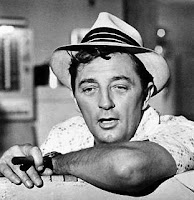TTAB Finds "THUNDER" Weak, Dismisses THUNDERBIRD Wine Opposition to THUNDER ROAD for Moonshine and Whiskey
This is one of those relatively rare occasions when a party gathers enough evidence of third-party use and registrations to affect the outcome of a Section 2(d) proceeding. The Board dismissed Gallo's opposition to registration of the mark THUNDER ROAD for "alcoholic beverages, namely, Tennessee sour mash whiskey and moonshine," finding the mark not likely to cause confusion with the registered mark THUNDERBIRD for "alcoholic beverages except beers." E. & J. Gallo Winery v. Thunder Road Brands, LLC, Opposition No. 91222284 (December 6, 2018) [not precedential] (Opinion by Judge Albert Zervas).
Fame: Opposer Gallo claimed that its THUNDERBIRD mark is a "very strong, if not famous, mark," relying on use of the mark since 1957 and on pertinent sales and advertising data. However, its advertising expenditures from 2009-2015 were minimal. One article called THUNDERBIRD an "old brand," one whose glory days were 30 years ago. And its financial figures lacked context. One YouTube comment stated "[i]t's been so long, I didn't think they made that crap anymore, guess they do," suggesting a lack of notoriety for the brand.
Two brand awareness studies were of limited probative value because no one with first-hand knowledge of the studies testified, and because the studies were not particularly recent.
The Board concluded that Gallo had established "a moderate degree of renown," particularly for low-priced wine with a high alcohol content, and therefore the mark has some strength and is entitled a "broader than normal scope of protection."
The Goods: Because the goods are legally identical, the Board presumed that they travel in the same channels of trade to the same classes of consumers.
Purchasing Conditions: Gallo's wine sells for $5.00, and the evidence showed that moonshine sells for $2.99 per bottle. Consumers are likely to exercise a low degree of care when making a decision to purchase these goods. [particularly after the first bottle - ed.].
Third-party Marks: Many of the third-party registrations and uses of THUNDER-formative marks involved beer, but the Board found these to be relevant "because beer is a good similar to wine, whiskey and moonshine." They are all alcoholic beverages marketed in the same trade channels to the same customers.
In all, the Board counted 25 registrations and 13 Internet uses of THUNDER-formative marks for beer, wine, and other alcoholic beverages. The Board found that these third-party registrations and uses "establish weakness of the term THUNDER as a source indicator for alcoholic beverages. See Juice Generation (at least 26 third-part uses and registrations) and Jack Wolfskin ("voluminous" third-party evidence). Thus the THUNDERBIRD mark "is not entitled to such a broad scope of protection that it is a bar to the registration of any mark comprising in part, the word 'thunder.'"
The Marks at Issue: Although THUNDER is the first word in each mark, it is a weak source indicator, and so consumers will look to other parts of the marks to distinguish the source of the goods.
Of particular significance in our analysis is the meaning of the marks considered as a whole. A “thunderbird” is a mythical bird, while THUNDER ROAD on its face refers to the name of a road. “Thunder Road” may also be associated with the name of a movie released in 1958 starring Robert Mitchum, the father of Applicant’s principal James Mitchum, or the name of a song by Bruce Springsteen from 1975. The marks have entirely different connotations and hence different commercial impressions.
he Board concluded that the differences in the marks outweigh their similarities.
Conclusion: Balancing the relevant du Pont factors, the Board concluded that Opposer Gallo had filed to prove a likelihood of confusion, and therefor the Board dismissed the opposition.
Read comments and post your comment here.
TTABlog comment: Here's a trivia question: on what early tv show did Chief Thunderthud appear? No googling!
Text Copyright John L. Welch 2018.




7 Comments:
Alcohol, yes. Two different products and shelf locations in the liquor store. Concern should be more about label design similarities. Very helpful for me. THANK YOU! This gave me some good ideas. I’m fighting an opposition (91238614) pro-se from Jaguar Land Rover claiming my mark for our RangeRunner camping trailer will cause confusion with their Range Rover.
pp. 10-11: "Also, one Youtube comment states, "[i]t's been so long, I didn't think they made that crap anymore, guess they do,' suggesting a lack of notoriety of the THUNDERBIRD brand."
Doesn't it suggest the opposite? The issue isn't whether the product is good or bad (or crap), but whether people recognize the brand, which this commenter clearly did despite it having "been so long."
This case is also a reminder of what can happen when cost-containment influences strategy in TTAB proceedings -- in particular the decision whether to proceed with what we have 'on the shelf' (sales and marketing numbers, examples of advertising) vs. expending funds to assemble additional evidence (testimony, survey, market study.)
F Troop?
(no Google, hence the ?)
cjc
Agreed on the YouTube comment, which stands for long-standing continuing use. The way out for the Board is that they interpreted this as consumer non-recognition on the basis that the comment demonstrates a subjective, consumer understanding that the mark is no longer in use in commerce.
HOWDY DOODY! Cowabunga, Buffalo Bob!
Bottom line, the Board's other findings notwithstanding, the marks create different commercial impressions. THUNDERBIRD is a term with which the public is familiar. THUNDER ROAD, as a whole, on the other hand, does not have an immediately recognizable meaning.
Post a Comment
<< Home